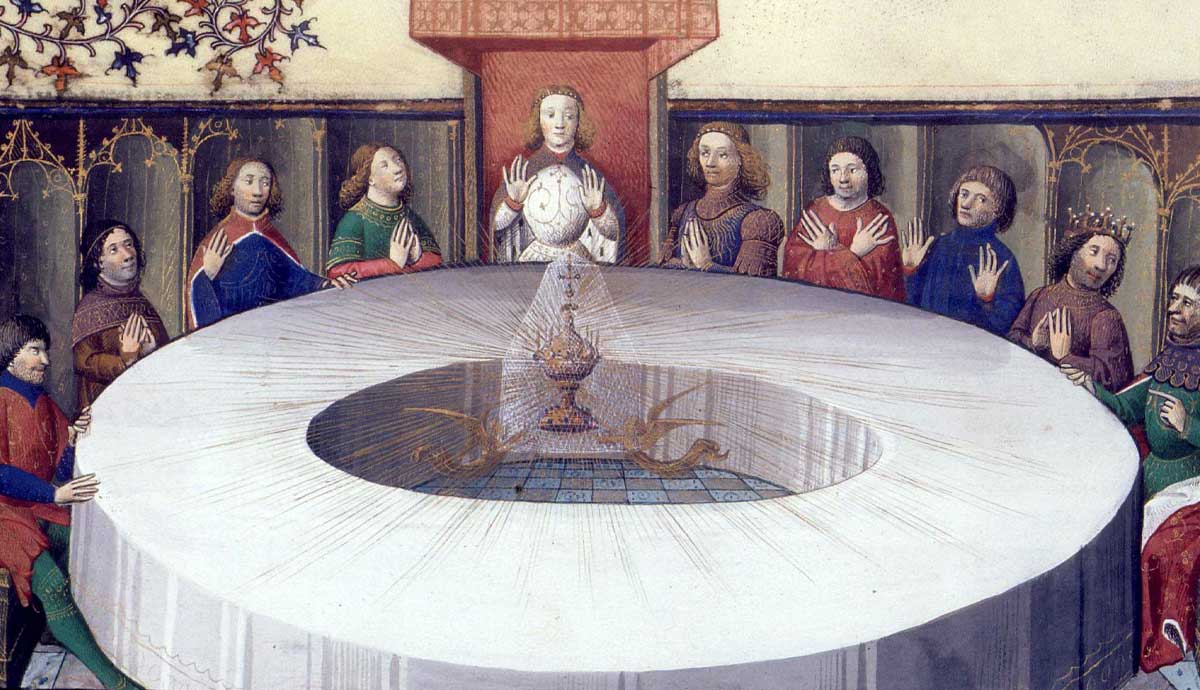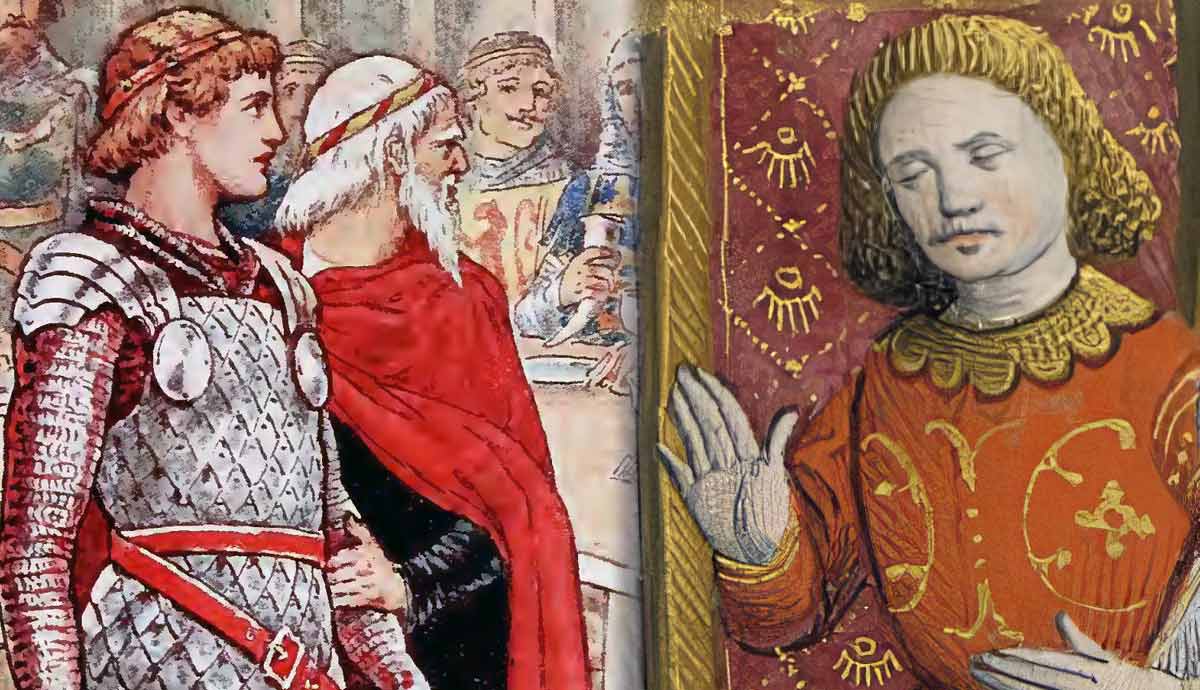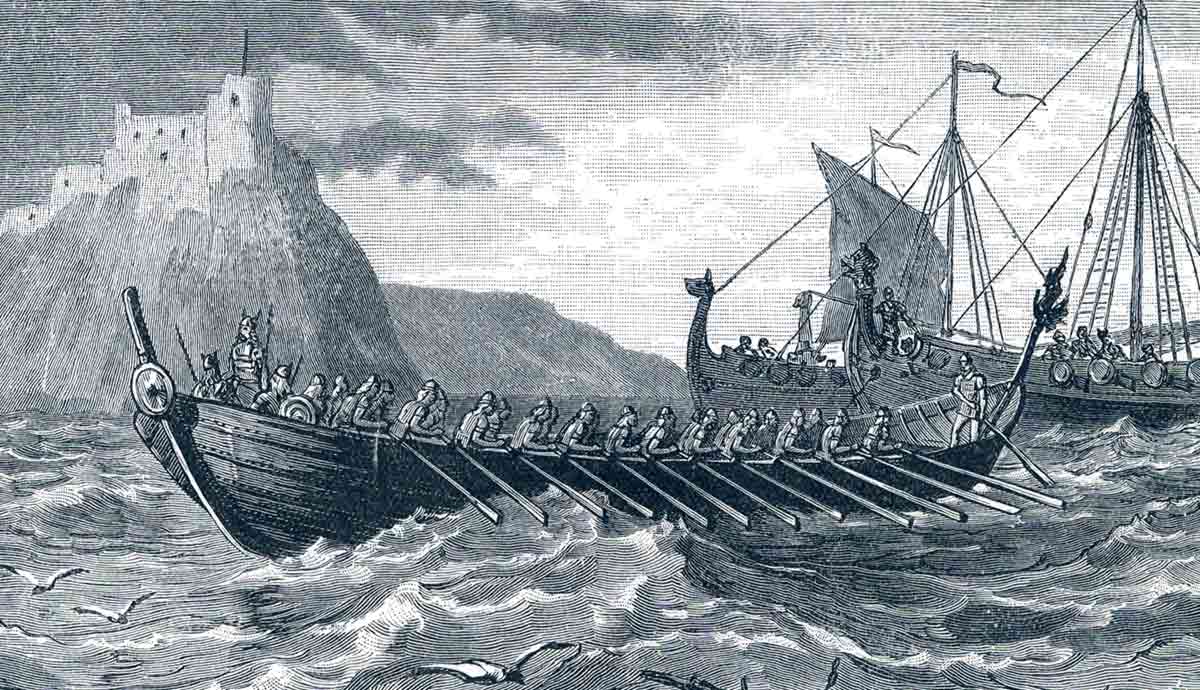
One of many modern theories about the origin of the legends of King Arthur is that they can be traced back to the activities of a Roman officer in Britain. His name was Lucius Artorius Castus. He lived long before the traditional Arthurian period, but some theorists argue that he was the original historical person who inspired the story of the legendary king. What is the evidence to support this theory, and why is it rejected by most modern Arthurian scholars?
Why Would King Arthur Have Been Lucius Artorius Castus?

This theory is based on four key pieces of evidence. Firstly, Lucius Artorius Castus is the only person named Artorius, the origin of the name “Arthur,” who is known to have served in Britain in a prominent position before the earliest traces of the Arthurian legend.
Secondly, a prominent part of the legend recorded by Geoffrey of Monmouth in c. 1137 is that King Arthur went on some exploits on the continent. He allegedly fought a war against the Romans in Gaul. However, the extensive historical record written by Gregory of Tours makes it clear that such a thing never occurred in the 6th century, the traditional Arthurian period. For this reason, many scholars have argued that Geoffrey of Monmouth’s King Arthur is actually a composite figure. According to this idea, the story of the incursion into Gaul was likely taken from an earlier figure who really did do something like that. Then, somehow, the activities of that earlier figure were combined with those of a 6th-century Arthur figure. Supposedly, the activities of Lucius Artorius Castus can explain the Gallic invasion claims.

The third reason why Lucius Artorius Castus has been connected to King Arthur is that he was supposedly associated with the Sarmatians. About 5,000 of them were sent to Britain after being subdued by the Romans in 175 CE, about the time of Castus. According to proponents of the Castus theory, their myths and legends bore some striking similarities to stories found in the Arthurian legends. Hence, the fact that they came to Britain in Castus’ time supposedly means that their traditions could have become attached to him.
Finally, Castus supposedly occupied a very prominent position in Britain. He was based at Eboracum, or York, which was one of the most prominent cities in Roman Britain and was the capital of the British province. The fact that Castus had such prominence means that it would have been easy for legends to develop around him. Proponents of this theory argue that he led the Sarmatians into battle against the northern tribes during the attested wars of the late 2nd century CE.
What Do We Really Know About Lucius Artorius Castus?

It is with good reason that the majority of scholars reject any connection between Lucius Artorius Castus and King Arthur. Firstly, let us examine what we really know about him. He does not appear in any literary source. The key source for him is an inscribed stone that provides a summary of his career. One of the most crucial details on the stone for Arthurian theorists is the fact that he was made the prefect of the Sixth Legion Victrix. This was stationed at Eboracum, or York, in Britain. Therefore, this shows that Castus had a prominent position in Britain.
Furthermore, just after mentioning this part of his career, the stone inscription mentions that he led troops from British legions against an enemy. The stone is broken at this point, with the enemy being recorded as “ARM___S.” According to one theory, this should be restored as “Armoricos,” meaning the inhabitants of Armorica. This would mean that Castus led troops from Britain to Gaul, just like King Arthur supposedly did.
Was Lucius Artorius Castus Really a Prominent Roman General?

What did being the prefect of the Sixth Legion Victrix really involve? The truth is that this position meant that Castus was in charge of overseeing the legionary base. He did not, generally speaking, lead any troops into battle. In the hierarchy of the legion, two officers above Castus would need to be out of action in order for Castus to take over as military general. Hence, there is no evidence that Castus was directly involved in any of the wars that took place against the northern tribes in that era.
The fact that there is no reason to believe that Castus was directly involved in those wars is important. This means that there is no reason to conclude that he could have anything to do with the legends of King Arthur fighting wars in the north of Britain. Furthermore, it makes it very difficult to see why he would have been special in any significant way to the Sarmatian troops who had been sent to Britain. The idea that he led Sarmatian troops into battle in Britain is simply not supported by the available evidence.
Issues With the Gallic Invasion

Furthermore, what about the idea that Castus took troops from Britain to fight a war in Armorica? Could the Castus identification really potentially explain King Arthur’s legendary war in Gaul? If so, this would lend credence to the idea that he was at least partially the origin of the legendary figure of King Arthur.
But the enemies listed on the memorial stone are problematic. As we saw earlier, it appears as “ARM____S.” The earliest drawing of Castus’ memorial stone, produced in 1850, indicates that there was a ligatured “E” attached to the end of “ARM.” This is supported by the fact that the ethnonym “Armoricos” is not attested on any comparable memorial inscription. This would suggest that the inscription actually refers to the Armenios, not the Armoricos. In other words, Castus did not fight a war in Armorica, Gaul, but in Armenia, far away from Gaul. If this is the case, there is no connection with King Arthur’s legendary invasion of Gaul.

There is significant support for the conclusion that Castus actually went to Armenia rather than Armorica. For one thing, unlike “Armoricos,” we do find forms of the ethnonym “Armenios” on comparable stone inscriptions from the Roman era. Furthermore, throughout the mid-2nd to the mid-3rd centuries, the Romans fought several significant wars in Armenia. This covers all the periods in which Castus is believed to have lived.
Notably, there is a record that in 161 CE, the Romans sent the governor of Britain, named Statius Priscus, to participate in one of the wars in Armenia. The fact that the Romans are known to have sent such a prominent figure from Britain to Armenia supports the suggestion that the same thing occurred with Castus. Many scholars, if not the majority, now believe that Castus was sent along with Priscus in 161. In contrast, there is nothing to recommend the view that Castus led troops to Armorica, as required by the theory connecting him to King Arthur.
The Fatal Flaw in the Sarmatian Connection

The conclusion that Lucius Artorius Castus went to Armenia in 161 has further consequences for the theory connecting him to King Arthur. A key part of the theory is that the Sarmatians, whose legends are supposedly similar to the legends of King Arthur, were closely associated with Lucius Artorius Castus. This obviously requires them to have been present in Britain at the same time as Castus. The problem is that the Sarmatians were sent to Britain in 175 CE. If Castus left for Armenia in 161, which does appear to be the case, then he was already long gone by the time the Sarmatians arrived. This means that he cannot have had anything to do with them.
The memorial inscription supports this conclusion. Based on the style of the stone, the majority of scholars agree that it dates to the Antonine Period, which ended in 192. The wording on the stone is also consistent with this period.
Notice that this stone was carved during the Antonine Period, yet Castus left Britain long before the end of his career. This strongly supports the aforementioned chronology of Castus’s life, placing his departure from Britain in 161.
Why King Arthur Was Not Based on Lucius Artorius Castus

In conclusion, there is good reason to reject the theory that Lucius Artorius Castus had anything to do with the legends of King Arthur. Far from being a prominent battle leader in Britain, Castus was the prefect of the Sixth Legion Victrix. As such, he may well have never seen battle in Britain at all. Furthermore, the idea that he led troops from Britain to Gaul is very unlikely. The evidence more convincingly supports the conclusion that he was sent to Armenia, which does not feature in the Arthurian legends.
In addition, this would mean that he was already gone from Britain before the Sarmatians were sent there. Thus, even if the Sarmatian legends could be connected to the Arthurian legends, this would not support the Castus theory. There is no convincing reason why those legends should have found themselves attached to Castus. All things considered, there is no reason to associate Lucius Artorius Castus with King Arthur. However, there are several other historical figures to be considered.










